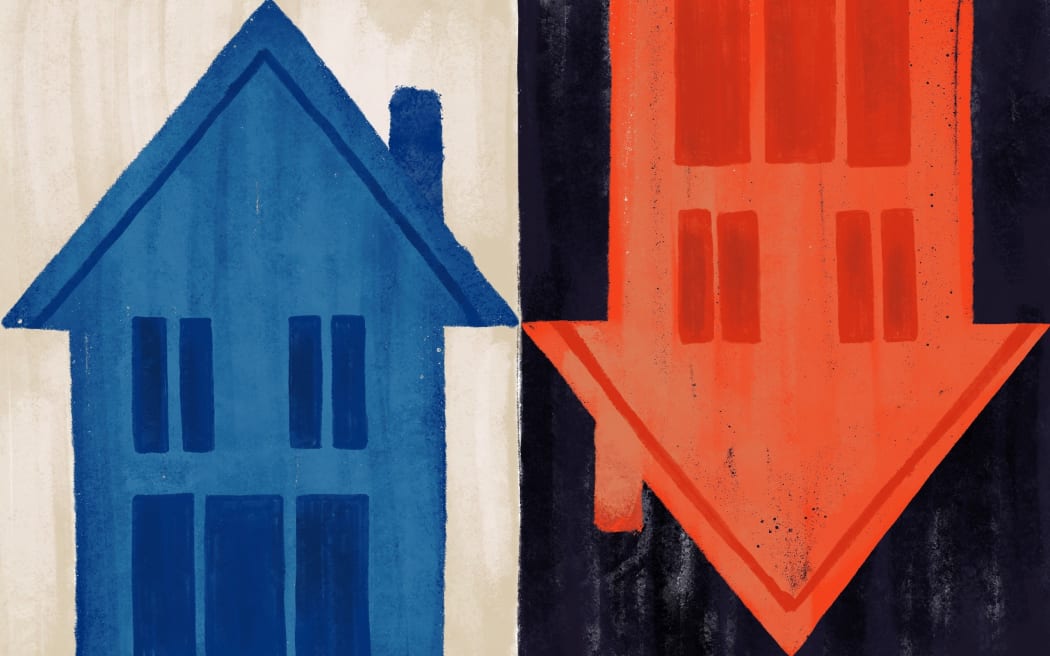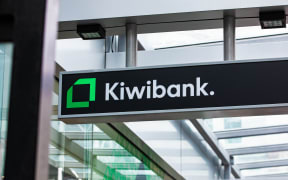
Photo: RNZ
As home loan rates drop, people might be tempted to shop around for a better deal. Or perhaps they have come into some money and want to pay off their fixed-rate loan early.
But potential interest savings could be offset by a bigger upfront cost: A prepayment cost, often called a break fee.
All banks borrow from the wholesale market to fund home loans. A break fee covers the costs incurred by the bank when a customer ends a contract early.
It is hard to know ahead of time how much these fees will cost, because they depend on current wholesale prices, among other things.
Why now?
Usually, break fees only become an issue when interest rates are falling, said Christopher Walsh, the founder of financial education company, MoneyHub.
"People will be considering break fees when they've fixed for a long period on their mortgage.
"Maybe a year ago, when interest rates kept increasing, they opted for a five-year contract. Now, they see media outlets reporting interest rates are dropping. For the same product, they feel they're paying too much."
In recent months, major banks have been reducing home interest rates. This followed falls in wholesale prices, based on expectations that central banks are getting closer to cutting their benchmark rates.
Rates dropped again at the end of February, after the Reserve Bank announced it was keeping the Official Cash Rate at 5.5 percent. And again, on Monday, for ASB and Kiwibank.
Background
The OCR hit a long-term low of 0.25 percent in March, 2020. But the average mortgage rates did not bottom out until about 18 months later.
Why? The OCR affects the price of borrowing for lenders. Raising it lowers discretionary spending, cooling the economy. Lowering it makes it cheaper to borrow money, promoting spending. Typically, when the OCR goes up, mortgages do, too - and vice versa.
According to ASB, more than three-quarters of fixed home lending customers opted for terms of 24 months or less.
Back to March 2020: The average residential mortgage interest rate for a two-year contract was 4.22 percent. A year later, it was 3.47 percent. In 2022, it was 5.04 percent. And last year, 7.03 percent. In February this year, it was 7.45 percent.
On Monday, Kiwibank announced for home borrowers with at least 20 percent equity, the bank's two-year term is 6.79 percent, and 6.89 percent for those with less equity. ASB's two-year rate also dropped to 6.79 percent.
Calculating break fees
Your contract will state you need to pay a break fee if you end it early, but you will not know the exact amount ahead of time, Walsh said.
While break fees can seem unfair, there are rules in place to make sure banks are covering their costs and not profiting from them.
The Credit Contracts and Consumer Finance Act states prepayment fees are unreasonable only if they exceed "a reasonable estimate of the creditor's loss arising from the part or full prepayment". A recommended formula is provided by the Credit Contracts and Consumer Finance Regulations.
But some banks, such as Kiwibank, apply their own formula to calculate fees: "We apply our own mathematical formula to calculate your fixed rate break cost, which we consider better reflects a reasonable estimate of our loss in these circumstances."
Often, banks will allow customers to make extra payments up to a certain limit, before fees apply.
ANZ's head of homeowners Emily Mendes Ribeiro said customers can increase regular repayments towards their home loan by up to $250 per week. Plus, each year they can make an extra lump sum repayment up to 5 percent of their current loan amount.
"Beyond that, we would recommend a customer contact us and we can give them an estimate."
Estimates are based on the interest rate terms, how far through someone is, and - mainly - the wholesale fixed rates amount, she said.
Fixed home loans generally have lower interest rates than floating or flexible ones, but many borrowers have a split home loan - a mix of both interest rates. No break fees apply to floating home loans.
Extenuating circumstances
Banks are unlikely to discount or waive break fees, even in extenuating circumstances, Walsh from MoneyHub said.
"[The bank] would be losing money in most cases if they waived it. Banks tend to follow their contracts and terms and conditions, so I'd be very surprised if they waived a recovery of loss for anyone."
Sometimes, banks will offer cash contributions to attract new customers, to help offset early repayment fees. But these amounts have declined over time.
Complaints
"Customers are frequently surprised at the size of the charge they face during time of changing interest rates," deputy banking Ombudsman, Sarah Brooks said. "That surprise leads them to complain to us."
Immediately after the Reserve Bank's lifted the OCR from 0.25 to 0.5 in October 2021, "we received a small spike of cases about home lending break costs, in particular cash contribution claw backs", she said.
But since then, complaints about break costs have remained a stable but "very small" proportion of overall cases.





